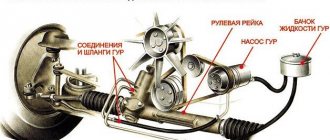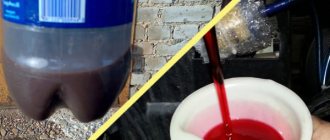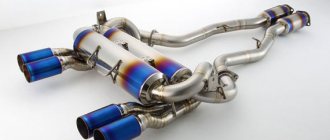What is power steering fluid
Power steering fluid is a specialized fluid that acts as a working fluid in the hydraulic power steering systems of cars, tractors and other wheeled vehicles.
Modern cars and trucks, buses, tractors and other wheeled vehicles are equipped with a system that facilitates the driver’s work - hydraulic power steering (power steering). This system consists of a liquid pump driven by the engine crankshaft, a power actuator, a control mechanism and piping. The actuator is racks or steering mechanisms with bipods, and the control mechanism is a distributor integrated with the rack or steering mechanism, which controls fluid flows depending on the direction and angle of rotation of the steering wheel.
Power steering uses various fluids as a working fluid, which are assigned several important functions:
- Transfer of force from the power steering pump to the actuator, which ensures the rotation of the steered wheels;
- Lubrication of rubbing parts of the power steering system;
- Protection of metal elements of power steering from corrosion;
- Cooling of the rubbing parts of the power steering system.
All these functions can be most effectively performed only by special fluids designed for use in power steering. These liquids have a number of features and distinctive features, which should be discussed in more detail.
Main functions and characteristics of power steering oils
Power steering fluid performs the following functions:
- pressure transmission between the pump and actuator units;
- lubrication and cooling of amplifier structural elements;
- removal of wear products;
- reduction of friction between elements.
The working fluid in power steering is a liquid, divided into two categories:
- Mineral based, which is not aggressive to rubber O-rings. The oil additionally protects the material, preventing it from cracking due to temperature changes. The disadvantage is increased viscosity (especially in cold weather), short service life and a tendency to intensive foam formation.
- Synthetic liquids that destroy rubber parts (except for products made from special materials). The oil has an increased cost, which is compensated by an increased resource, as well as a uniform viscosity that is little dependent on temperature.
Classification of power steering hydraulic fluids
Fluids used in power steering can be divided according to several criteria:
- Color;
- Compound;
- Variety.
Color classification
It is wrong to be guided only by color gradation when choosing oil, although this practice is widespread among car owners. It is also often indicated what color liquids can be mixed and which ones should not be mixed.
Mixing is contraindicated with liquids based on composition and not color, and since now both mineral water and synthetics can be presented in any color, you should treat this information very carefully.
Red ATF gear oil is usually synthetic, the Dexron brand from General Motors is considered the standard, but there are products from other manufacturers, such as Revenol, Motul, Shell, Zic, etc.
Yellow oil, produced by the Daimler concern and under its license, is used in Mercedes-Benz hydraulic boosters. It can be synthetic and mineral.
Green oil. For the most part, multifunctional and universal liquids can be either synthetic or mineral in composition. They are used in power steering, suspension and other systems that operate on liquids. It cannot be mixed with other colors, except in cases where the manufacturer declares full compatibility, for example Comma PSF MVCHF is compatible with some types of Dexron.
Reds
They belong to the ATF class, that is, transmission. Most often used for automatic transmissions, but sometimes also used for power steering. The red brands Dexron II and Dexron III are developed by the automobile concern General Motors. There are other red brands, but they are manufactured under license from General Motors.
Yellow
This liquid is considered universal. This type of oil can be found in most hydraulic power steering systems. This lubricant is also used in manual and automatic transmissions.
Green
Synthetic or mineral based oil. For use exclusively in manual transmissions. You can use such a lubricant in power steering, but before doing this you need to drain all the old fluid and flush the system.
Types of power steering fluids
Power steering fluids must have different properties, which are provided by additives and chemical composition. Among them:
- required viscosity index;
- temperature resistance;
- mechanical and hydraulic properties;
- corrosion protection;
- anti-foam properties;
- lubricating properties.
All power steering fluids on the market have all these characteristics to one degree or another.
In turn, according to their chemical composition they are distinguished:
- synthetic;
- semi-synthetic;
- mineral oils.
Let's look at their differences and scope of application.
Synthetic
Synthetics are based on hydrocarbons (alkylbenzenes, polyalphaolefins) and various esters. All these compounds are obtained as a result of directed chemical synthesis from oil. This is a base to which various additives are added. Synthetic oils have the following advantages:
- high viscosity index;
- thermal-oxidative stability;
- long service life;
- low volatility;
- resistance to low and high temperatures;
- Excellent anti-corrosion, anti-foam and lubricating properties.
But even with such characteristics, fully synthetic oils are rarely used in power steering systems due to the many rubber seals that are aggressively affected by synthetics. Synthetics are used only if approved by the manufacturer. Another disadvantage of synthetics is the high price.
Semi-synthetic
To neutralize the aggressive effect on rubber parts, manufacturers add a variety of silicone additives.
Mineral
Mineral oils are based on various petroleum fractions, such as naphthenes and paraffins. 97% is a mineral base, the other 3% is additives. Such oils are more suitable for power steering, as they are neutral to rubber elements. Operating temperature ranges from -40°C to 90°C. Synthetics work up to 130°C-150°C, the lower limit is similar. Mineral oils are affordable, but in other respects they are inferior to synthetic ones. This concerns service life, foaming and lubricity.
What kind of oil should be poured into the power steering - synthetic or mineral? First of all, the one recommended by the manufacturer.
Differences between hydraulic fluids
Dexron. Lubricants have been produced since 1968. This is a separate class created by General Motors Corporation. Dexron is an official brand and is not manufactured exclusively by GM.
ATF (Automatic Transmission Fluid) - lubricants intended for automatic transmissions. Widespread among Japanese manufacturers. Often such hydraulic oil is found in power steering, most of it has a red tint.
PSF (Power Steering Fluid) – oil for hydraulic booster.
Multi HF are universal hydraulic oils for use in hydraulic power steering systems, allow complete mixing and interchangeability, and have approvals from many automakers. This oil is the best choice when purchasing.
Useful tips
Continuing to consider this topic, it should be added that to make it easier to select power steering oil, you can separately study the car manual or the compatibility table of power steering fluids by car brand (such a table is often found on specialized auto forums, etc.). You can also send a request to the official dealer of a particular brand.
As for the oils themselves and their compatibility, all liquids are divided into three groups:
- light mineral oils (red and yellow). They can often be mixed together for short-term use in the power steering system;
- dark mineral oils (often green), which can only be mixed within this group, avoiding mixing with products from other groups;
- synthetic oils, which, regardless of color, are conditionally compatible with each other;
We also add that today the two most common types of power steering fluids are Dexron and PSF. At the same time, the first option has become much more widespread. In fact, liquids like Dexron II, Dexron III, etc. are developed by GM.
At the same time, you can buy both Dexron from GM and equally high-quality analogues from other global manufacturers. As for PSF, the choice in this case is limited, since such fluids are often produced only by the car manufacturer itself; there are noticeably fewer third-party analogues.
Changing power steering oil - description of the process
Replacing the lubricant in the power steering is a rather painstaking task; you should take the procedure seriously and follow the instructions.
Adding fluid
To add oil, it is recommended to purchase Multi HF universal fluid, since it can be mixed with absolutely any lubricant.
Instructions for adding hydraulic lubricant to the power steering:
- Inspect the power steering reservoir and mechanism for leaks. If there are any, they need to be eliminated;
- Check the hydraulic oil level in the power steering reservoir;
- After removing the plug, add fluid to about;
- Start the engine and turn the steering wheel from the extreme left to the extreme right;
- Check the lubricant level in the power steering reservoir and, if necessary, top up to about.
Complete fluid change
A complete lubricant change requires great perseverance and coordination. Hydraulic oil must be selected based on the manufacturer’s recommendations.
- Hang up the car. This is done to facilitate rotation of the steering wheel when the engine is off;
- We will need a syringe - we need to pump out all the fluid from the power steering reservoir;
- Then loosen the clamps on the hoses, remove them from the tank, rinse the container itself thoroughly;
- Direct the return line (steering rack hose) into an empty jar - the liquid remaining in the rack will drain there;
- By turning the steering wheel, remove any remaining lubricant from the mechanism. It is required to make quite intense and prolonged movements with the steering wheel;
- After the hydraulic oil stops leaking, you need to fill (rinse) the rack with freshly purchased fluid. To do this, insert a funnel into the second hose and fill it to capacity;
- After this, we repeat the manipulations with the steering wheel again. When all the oil has flowed out of the return hose, the procedure can be completed;
- Then reassemble the hydraulic power steering system in reverse order;
- Fill the mechanism reservoir with oil according to the level;
- After the system is filled, you need to turn the steering wheel from the extreme left position to the extreme right. Such manipulations should be carried out with the engine running;
- We turn off the engine, lower the car, check the tightness of the connections, and add fluid to the amplifier tank to the maximum.
This is interesting: Daewoo Matiz coolant thermostat - how to replace?
Belt Drive Power Steering Pump
Why you can’t save money when choosing power steering fluid
When choosing power steering fluid, you should pay attention to well-known manufacturers of car accessories. It is better to purchase such consumables in specialized stores for car enthusiasts, since they directly affect traffic safety. Low-quality power steering fluid may have the following disadvantages:
- Loss of properties at elevated temperatures. During operation, the power steering fluid on some cars “heats up” above 100 degrees Celsius. Oil with poor quality additives may begin to coagulate at such high temperatures that it will cause difficulty turning the steering wheel. Particularly low-quality power steering fluids can completely damage the power steering at high temperatures. In such a situation, the steering will continue to work, but after that the driver will have to repair the power steering elements;
- Release of hazardous fumes for vehicle occupants. The amount of chemical reagents mixed into power steering fluid is no less than in car additives. At elevated temperatures, power steering fluid emits vapors that can be hazardous to the health of passengers. If you purchase such oils in specialized stores and from trusted brands, you don’t need to worry about harmful vapors, while in an effort to save money when purchasing secondhand, you can end up with a liquid containing harmful or even dangerous elements.
The driver has to replace and top up power steering fluid infrequently, and the savings on it are even less justified. Buy oils with additives that are produced by well-known companies that have all the necessary certificates for the production of such consumables.
( 395 votes, average: 4.48 out of 5)
What is Gravitex and how to apply it to a car body
What is the difference between ECTO, Pulsar, G-DRIVE, V-POWER, Race gasoline and regular gasoline?
Related Posts
Terms of use of liquids
It is also worth taking care of how to change the oil in the hydraulic booster. Such information is always contained in the car’s service book. No less often, manufacturers recommend not changing this oil at all. They are guided by a simple rule: the service life of the mixture is designed for the average life of the machine.
But a car can serve faithfully for quite a long time. If the fluid is not original, it needs to be changed more often. Some manufacturers clearly prescribe the procedure for replacing the fluid, including taking into account cases when the composition is not original. Often the control period ranges from 50 to 100 thousand kilometers.
If there is a problem with the power steering system, the first thing you need to do is change the oil. It is also worth checking the condition of the fluid in the power steering. If it has darkened, thickened, or smells unpleasant, it needs to be changed. By the way, synthetic compounds can be used much longer.
How to completely replace a Ford Focus 2
A complete replacement will be considered using the example of the Ford Focus II.
Tools for work
To completely replace the fluid in the power steering, for example, Ford Focus 2, you will need to use:
- a hose at least 1.5 meters long with a fitting at the end, its diameter must correspond to the return hose of the system;
- a hose of similar diameter about a meter long, equipped with a plug;
- containers with a volume of several liters and with wide edges or neck;
- pliers with curved tips;
You can use regular pliers, but they are less convenient
How to change: instructions
It is recommended that two people perform this type of maintenance.
Fines for crossing the stop line and speeding will no longer bother you!
- Raise the car with a jack to make it easier to turn the steering wheel. The engine must be turned off.
- Unscrew the fasteners and remove the power steering reservoir. Using pliers, move aside the clamp that secures the return hose (it comes from the steering rack). Drain the old fluid from the return hose into a substitute container. Install a hose with a fitting instead of the return line. Instead of the second hose (direct supply), install a hose with a plug.
Rotate the steering wheel left and right until it stops several times
Video on how to fill the missing oil into the power steering
You can complete a complete replacement of the power steering fluid yourself, spending about half an hour on it. A timely procedure will help avoid problems with vehicle handling on the road.
The fluid used for power steering operation has a shelf life that depends on its chemical composition and the design of the unit. After this resource has expired, the lubricant must be replaced with one that meets the requirements of the car manufacturer. Regular motor oil is not allowed to be poured into the power steering, even for temporary operation, regardless of the type of base.
Is it possible to fill the power steering with engine oil?
Motor - definitely not, transmission - with reservations. Next we will look in detail why.
To understand whether other oils, such as motor or transmission oils, can be poured into the power steering, you need to know what functions it performs.
The power steering fluid must cope with the following tasks:
- Lubrication of all power steering components;
- Protection against corrosion and wear of parts;
- Pressure transfer;
- Prevents foaming;
- System cooling.
The above characteristics are achieved by adding various additives, the presence and combination of which gives power steering oil the necessary qualities.
As you understand, the tasks of motor oil are somewhat different, so it is highly not recommended to pour it into the power steering.
Regarding transmission oil, everything is not so clear; the Japanese often use the same ATF fluid for automatic transmission and power steering. Europeans insist on using special PSF (Power Steering Fluid) oils.
Purpose and properties of hydraulic booster oils
The oil in the power steering system performs several functions:
- lubricating
- protective,
- anti-corrosion,
- transport (transfers energy from the pump to the rail).
This set of functions is typical for another component of some modern cars - automatic transmission. Therefore, today some cars, especially those made in Asia, are designed in such a way that the same oil is used for automatic transmission and power steering.
Working fluids for power steering are divided into:
- mineral,
- synthetic.
Most cars today use mineral power steering fluids with a special set of additives. Synthetic oils for power steering are also used, but less frequently. This is due to the peculiarity of the material of the rack seals, which are quickly destroyed in the aggressive environment of synthetic oils.
Only the type of fluid prescribed by the car manufacturer can be used as a base oil in power steering. Deviation from this rule will lead to rapid depressurization of the rack.
Also, car enthusiasts often divide liquids by color - red, yellow and green. According to this “rule,” it is only allowed to mix formulations of the same color or red oils with yellow ones. This principle exists, but it is not 100% correct. For example, green liquids can be created on both a mineral and a synthetic base, so there is no need to talk about their interchangeability.
Functions of power steering fluid
The functioning of the hydraulic power steering system (hereinafter referred to as power steering) not only in passenger cars, but also in trucks, is impossible without the use of special lubricant, which performs an essential function. To figure out what kind of fluid to pour into the power steering, you need to understand what it is used for and how this unit generally works.
The hydraulic booster installed on the vehicle allows the person behind the wheel to exert a minimum of effort to control the car. What elements does this system consist of? First of all, this is a liquid pump driven by the engine crankshaft, pipelines, a control mechanism and a power actuator. The control unit is made in the form of a distributor connected to a rack or steering wheel. It allows you to control the flow of lubricant by changing the direction and angle of rotation of the steering wheel. The actuator is made in the form of a rack or steering mechanism with a bipod.
The fluid that can be poured into the power steering must meet the following requirements:
- Transfer the force from the power steering pump to the actuator, which allows you to control the wheels of the car and turn it.
- Lubricate the rubbing surfaces of the power steering system.
- Protect metal parts from rust formation.
- Do not allow the rubbing elements of the system to overheat.
The above characteristics only have a special fluid that is intended for use in the power steering system. It has specific properties that will be described below.
Composition of power steering fluid
The composition of oils in hydraulic boosters is quite typical in structure for technical fluids. Base (mineral or synthetic oil) with additives that ensure the performance and safety of the oil itself. In this, all technical oils are similar.
Oils can be mineral or synthetic based. The main advantage of mineral water is its low cost. Additives also dissolve in them better than in some (not the most expensive) synthetics. Synthetics are much more resistant to destruction factors (thermal, chemical, mechanical) and, in addition, have a much higher viscosity index (i.e., viscosity changes less with temperature changes, see the article on oil viscosity for details)
Additives:
- anti-wear, extreme pressure
- viscosity modifiers
- antioxidant
- anti-corrosion
- anti-foam
- additives that protect rubber bands in the system.
There are also coloring additives, but they can hardly be called additives, since they do not affect the functional properties of the oil in any way. Their only purpose is to facilitate leak detection.
Synthetics
These are high-tech liquids, in the production of which the most modern developments and additives are used. Oil fractions for synthetics are purified by hydrocracking. Polyesters, polyhydric alcohols and sets of additives give them outstanding characteristics: a wide range of operating temperatures, stable oil film, long service life.
The main reason why synthetic-based hydraulic fluid cannot be poured into power steering intended for mineral ones is its aggressive effect on rubber products, of which there are many in the hydraulic booster. Where synthetics are used, the rubber has a completely different composition and is made on a silicone basis.
Semi-synthetics
A mixture of synthetic and mineral oils, due to which the latter receive significant improvements in performance: reduced foaming, fluidity, heat dissipation.
Semi-synthetic fluids include such well-known fluids as: Zic ATF Dex 3, Comma PSF MVCHF, Motul Dexron III and others.
Mineralka
Mineral-based oils contain petroleum fractions (85-98%), the rest are additives that improve the performance of the hydraulic fluid.
They are used in hydraulic boosters containing seals and parts based on ordinary rubber, since the mineral component is neutral and is not harmful to rubber products, unlike synthetics.
Mineral power steering fluids are the most inexpensive, but they also have a short service life. Mobil ATF 320 Premium is considered a good mineral oil; Dexron oils up to and including the IID marking were also mineral.
Why is it necessary to add fluid to this system?
The answer is obvious: to make the steering wheel “light”. This gives even greater comfort when driving the car. However, technically it is so provided that you cannot do without a special liquid for gur. It is distributed throughout the entire system and enables high-quality functioning of the mechanisms.
Many drivers say not power steering fluid, but oil. They are partly right. The entire composition of gur is based on oil, to which chemicals are added. It is important to know that motor oil is not suitable for these purposes.
Gur liquid is an important component that is designed to perform a number of functions
- Cooling of parts that heat up during friction.
- Lubrication of power steering system elements.
- Protection of mechanisms from rust.
But the main task performed by the power steering fluid is to “lighten” the steering wheel. Due to the action of the oil, the forces from the pump to the piston are better transmitted, and the system works perfectly.
Types of power steering fluids
Unfortunately, car manufacturers have not been able to agree on the use of a universal fluid for hydraulic steering, so we have some variation in the types.
Firstly, automatic transmission oil is most firmly entrenched in the minds of motorists, and therefore in the power steering systems. This, in general, is not as surprising as it might seem at first glance, since ATF (Automatic Transmission Fluid) is essentially the same hydraulic fluid with similar characteristics, except that they are raised “plus” relative to power steering fluids (in automatic transmission conditions the work is still tougher than in power steering).
But there is also a difference, namely: the presence of a friction additive in ATPs, which increases friction for better adhesion of the clutches. And this is not very good for power steering, where additional friction is not needed. True, these additives interact well precisely with the materials of the friction clutches, which, of course, are not present in the hydraulic booster. Therefore, the Japanese, in particular (and besides them the Chinese, Koreans, and some Europeans (Renault, for example, Opel)), often recommend pouring ATF into their power steering.
Secondly, ATPs also differ from each other, and quite strongly, since different automatic transmission designs require different oil performance. We will not consider here various special ATPs created for special boxes according to the specifications of the car manufacturer (Mercedes, BMW, etc.). All these fluids are much more expensive than universal ones, and power steering is no better. So two types of ATP are relevant for us now:
- ATF Dexron II - mineral oil
- ATF Dexron III - synthetic
This is interesting: Rating of autonomous and electric engine pre-heaters: which one is better to install
Synthetics, accordingly, are more expensive and retain their properties longer, but, according to some data, they are more aggressive towards rubber bands.
The second type of power steering fluids are special compounds under the general name PSF (Power Steering Fluid). It is possible that the additive packages are somehow super optimally selected, there is nothing extra like friction additives, but in fact this is rather a marketing ploy designed to increase the number of items sold “in one hand.” Otherwise, as already mentioned, many automakers would not recommend ATF in power steering with peace of mind.
Is it possible to mix oils?
Mixing is permissible, but you must follow the manufacturer's recommendations. Most often, the packaging indicates with which brands and classes of oils a particular power steering fluid can be mixed.
Do not mix synthetics and mineral water, as well as different colors, unless expressly indicated. If you have nowhere to go, and you have to pour what you have at hand, at the first opportunity, replace this mixture with the recommended one.
Sources
- https://www.avtoall.ru/article/66322942/
- https://ZnanieAvto.ru/rulim/maslo-v-gur.html
- https://TechAutoPort.ru/hodovaya-chast/rulevoe-upravlenie/zhidkost-gur.html
- https://SwapMotor.ru/tehnicheskoe-obsluzhivanie/zhidkosti-dlya-gur.html
- https://rad-star.ru/pressroom/articles/kakuyu-zhidkost-lit-v-gur/
- https://etlib.ru/blog/480-15-luchshih-zhidkostej-dlya-gura
- https://remontautomobilya.ru/top-20-zhidkostej-dlya-gur-atf-psf-dextron.html
- https://stodorog34.ru/articles/kakoe-maslo-zhidkost-zalivat-v-gidrousilitel/
[collapse]
How often to change power steering fluid
Many car manufacturers claim that there is no need to fill in new power steering fluid, since the fluid filled at the factory retains its properties unchanged throughout the entire operation of the car. In reality, things are different. Power steering lubricant is a consumable material that, like all products of the petrochemical industry, loses its original properties over time.
New power steering fluid should be poured every 1-2 years. This is the only way to keep the hydraulic pump in good condition, and the steering wheel movement will also be easy. The time when the lubricant should be changed is determined by the conditions in which the car is operated. If the machine experiences increased loads, lubricant must be refilled frequently.
Why might it be necessary to add new power steering fluid prematurely? The reason is often a breakdown of one of the components of the steering system. When the failed element is replaced, the lubricant will also have to be changed. Otherwise, the system, which contains both new and old parts, will not function properly.
In addition, you should regularly check the lubricant level in the power steering reservoir. This must be done every three months. Have you noticed that its volume has become smaller? Most often this happens if the system is depressurized. The solution is to carry out pressure testing, find and eliminate the leak. Only after this can you pour new fluid into the power steering.











